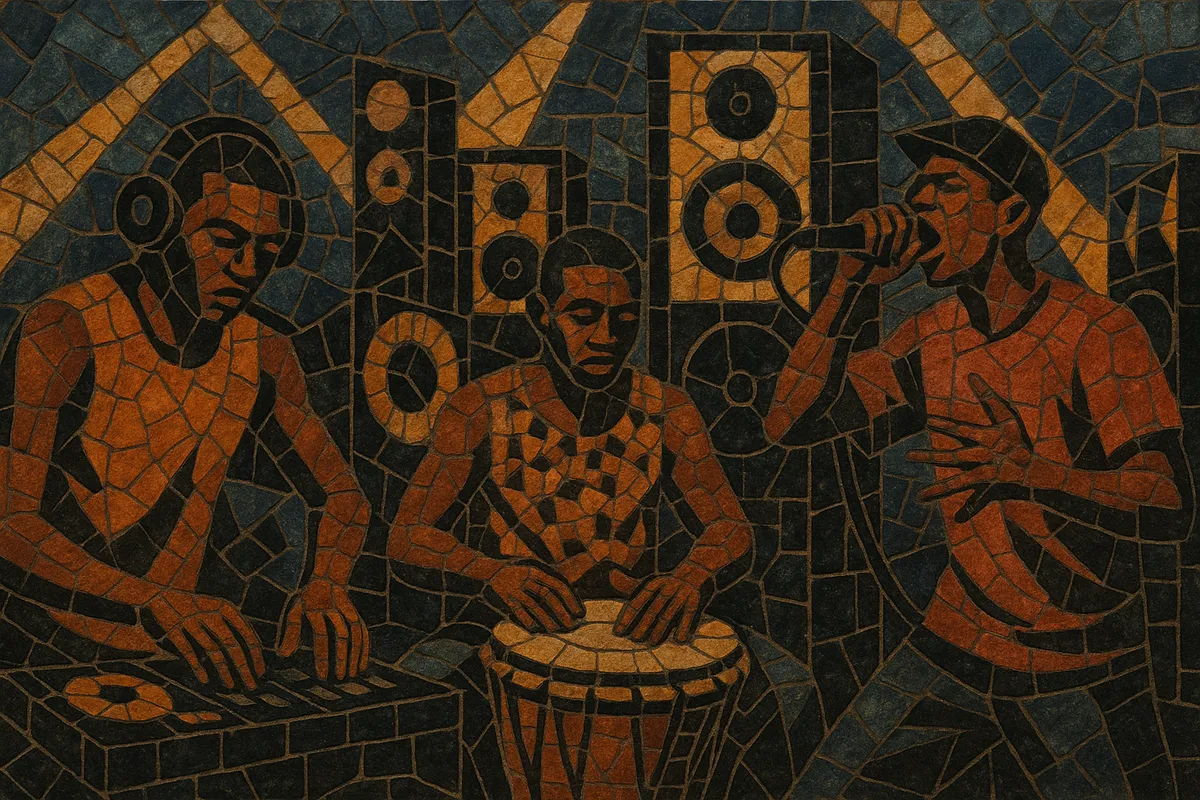Balani show is a high‑energy, DJ‑driven street‑party sound from Bamako, Mali. Emerging in the 2000s, it takes its name from the balafon (“bala”), whose interlocking, pentatonic patterns inspire the music’s rapid, percussive riffs and call‑and‑response chants.
Built for massive outdoor neighborhood parties, balani show blends local traditions with modern club aesthetics: punchy drum‑machine beats, sirens, whistles, claps, and shouted MC “animations” in Bambara and other Malian languages. Producers often use affordable software (e.g., FL Studio) to sequence balafon‑like synths and djembe samples, creating a relentless, dance‑commanding groove that sits between West African pop and global club styles.
The result is a raw, celebratory, and intensely communal sound system culture: portable generators, towering speakers, DJs, and MCs transforming streets into ephemeral dancefloors where traditional Malian rhythmic logic powers contemporary party music.
Balani show emerged in Bamako’s neighborhoods in the 2000s as community street parties powered by portable generators and stacks of speakers. Local DJs and MCs adapted the interlocking patterns of the balafon and djembe to drum machines and simple DAWs, crafting fast, percussive beats for outdoor dances. The term “balani show” nods to the balafon’s central rhythmic role and the “show” spectacle of MCs animating the crowd with chants, whistles, and sirens.
As the parties grew, DJs folded in regional and pan‑African club influences—especially coupé‑décalé from Côte d’Ivoire, Angolan kuduro, Congolese soukous/ndombolo energy, and global hip hop/house. The aesthetic remained unmistakably Malian: pentatonic riffs, griot‑informed call‑and‑response, and dense polyrhythmic layering—now delivered through synthesizers, samples, and booming subs.
Early tracks circulated via USB sticks, phones, and local CD‑Rs recorded at home studios. Compilations and blog culture later carried the sound beyond Mali, drawing attention from crate‑diggers and labels focused on contemporary Sahelian music. While still primarily a local street phenomenon, balani show’s DIY ethos and rhythmic identity have become touchstones in conversations about West African club culture and its global dialogues.


